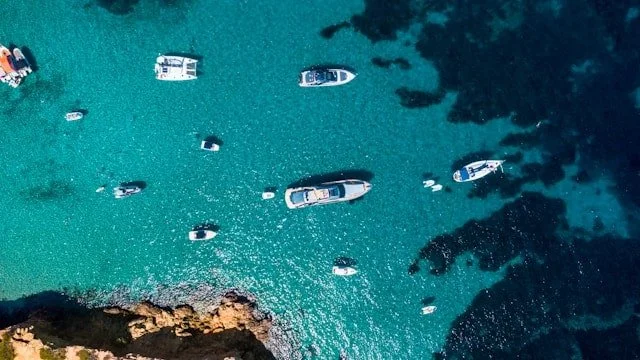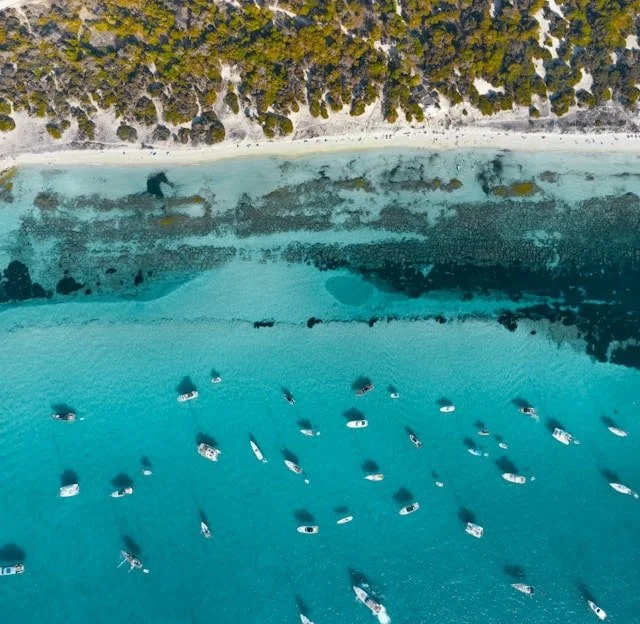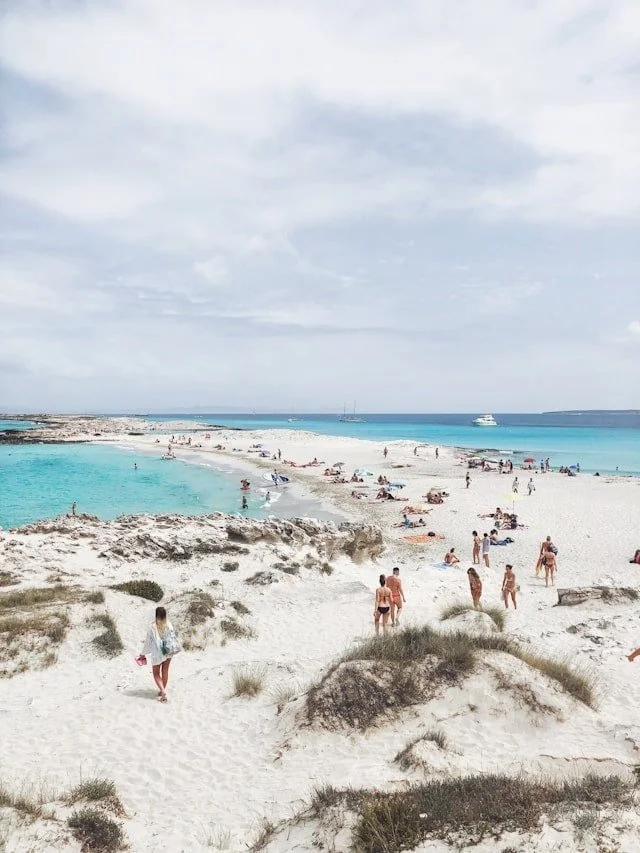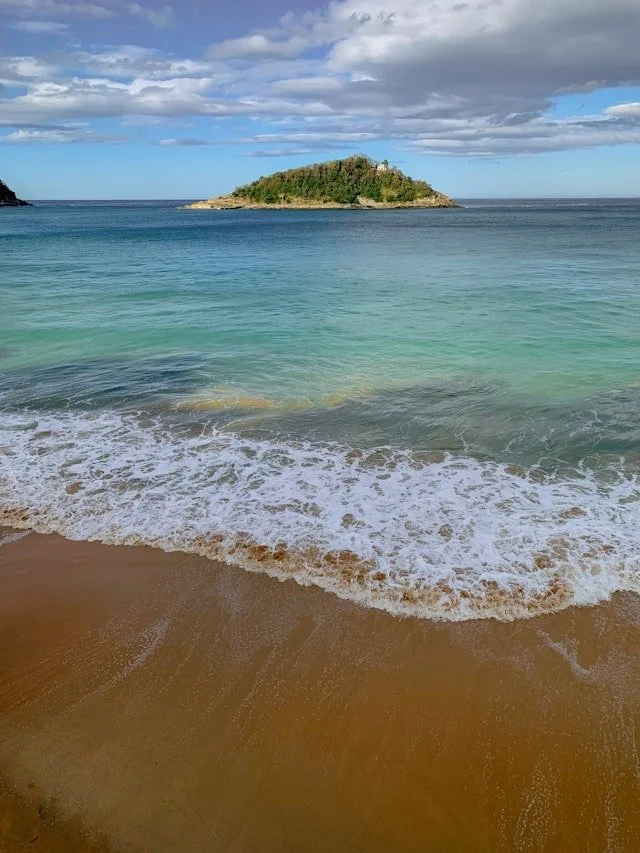15 Best Beaches in Spain
Golden sands, turquoise waters, and sun-drenched shores—these are the best beaches in Spain that make the country a top European escape.
From the Balearic Islands’ idyllic coves to the dramatic cliffs of the Costa Brava, Spain’s coastline offers something for every traveller.
Whether you want to kayak to secret spots, snorkel with vibrant marine life, or simply stretch out on golden sands, the best beaches in Spain deliver endless options.
With the Mediterranean on one side and the Atlantic on the other, this country is blessed with a diverse mix of lively beach resorts, peaceful bays, and hidden gems waiting to be explored.
Spain is well-known for its tasty tapas, thriving culture and whitewashed villages. The natural landscape poses opportunities aplenty for adventure aficionados, with rolling hilltops and death-defying gorges stealing the spotlight.
You could spend a lifetime discovering Spain’s beaches, and there would always be more to explore. Couple the big cities and quaint towns with these bliss-inducing beaches, and you’ll have a getaway from the godsend.
Whether you want to sip sangria in the beach bars or escape to a wind-carved cove, your Spain itinerary promises plenty of fun. The wealth of watersports, turquoise waters and silky soft sand offer respite from buzzing cities like Barcelona and Madrid.
As an Australian living in Barcelona, I’ve been on a hunt to uncover the most idyllic places to swim, splash and soak up the Spanish sun. I created this bucket list of the best beaches in Spain so that you can find the right fit for you. So, let’s get into it. Vamonos!
Best Beaches in Spain
Beach parties in Ibiza and the Canary Islands’ volcanic coastline set the scene for your holiday in Spain. Whether you want to keep it low-key or amp up the action, it doesn't get much more magnificent than this.
Here’s a summary of this guide on Spain’s best beaches:
Playa del Hombre Muerto, Catalonia
Playa de Ses Illetes, Formentera
Playa de Bolonia, Cádiz
Playa de Rodas, Islas Cíes, Galicia
Cala Comte, Ibiza
Lago Martianez, Tenerife
Playa de Cofete, Fuerteventura
Playa de Las Canteras, Gran Canaria
Playa de la Concha, San Sebastián
Playa de Maspalomas, Gran Canaria
Playa de las Catedrales, Galicia
Playa de la Barrosa, Andalusia
Playa de Muro, Mallorca
Cala Macarella, Menorca
Playa de los Muertos, Almería
Playa del Hombre Muerto, Catalonia
Playa del Hombre Muerto, locally known as Platja de l'Home Mort, is a nudist beach located in Sitges. This part of the Catalonia region is famous for its secluded beaches, secret coves and turquoise waters.
Sitges has long been recognised as one of the first gay beaches in the world, making it a hot spot for the LGBTQ+ community. This nude beach in Spain is especially busy in the summer season.
To reach the ‘Dead Man’s Beach’, follow a trail starting from the area where the old Atlàntida nightclub in Sitges was located. The path can be slightly challenging - the hike involves steep paths and uneven terrain, but it is definitely worth it.
Combine this beach in Sitges with a trip to Barcelona or Tarragona. Having lived in Barcelona for seven years, this spot has become my favourite summertime escape. Playa del Hombre Muerto is one of the best beaches in Spain near Barcelona. Especially if you want to get away from the big crowds in the inner city.
Cala Comte, Ibiza
Notorious for its nightlife scene, Ibiza is also home to the most famous beaches in Spain.
Located in the Balearic Islands, Ibiza is woven with whitewashed towns, verdant coastal trails and a rowdy social scene. When you’re all partied out, unwind at Cala Comte, a tranquil escape known for its stunning natural beauty.
This beach is situated on the island's western coast and is fringed with small coves, soft golden sand and shallow waters. The rocky islets are dotted around, further adding to the picture-perfect landscape.
Cala Comte is famous for its sunsets, so be sure to set aside a late afternoon/early evening in this traveller’s treasure trove. Amenities include beach bars and local restaurants. Lock lips with local delicacies and cool off with refreshing drinks as you admire the surrounding natural splendour. This beach is ideal for families, couples and sunset lovers.
Couple your beach trip with the best things to do in Ibiza, or see it all in this 3-day Ibiza itinerary. If it’s your first time visiting the Balearic Islands, find the top hotels and accommodations with this guide on where to stay in Ibiza.
Lago Martianez, Tenerife
Tenerife is located in the Canary Islands, just off the west coast of Morocco. This idyllic island is known for its active volcano, lush rainforests and unparalleled natural scenery.
Tenerife is home to some of the best beaches in Spain for couples. Thanks to its intimate atmosphere, quiet towns and authentic charm, the island offers an escape like no other.
Get refreshed as you swim around Lago Martiánez’s open-air swimming pool. Located in Puerto de la Cruz in the north of the island, this striking complex features famous sculptures, convenient facilities and a man-made lake.
Tenerife’s black sand beaches fringe the crashing coastline, but this 100,000-square-metre complex is your best bet if you want to escape the summer crowds. Before you jet off to this Canarian paradise, check out this guide on the best things to do in Tenerife.
Playa de Ses Illetes, Formentera
Neighbouring Ibiza, Formentera is fringed with some of the most beautiful beaches in Spain. Saline-white sand and turquoise-hued waters paint the picture for your next getaway.
This pint-sized Balearic Island is home to idyllic beaches, and honestly, they look like they’ve been ripped straight out of an adventure book.
Playa de Ses Illetes spans over 450 metres of white sand. The beach extends north towards the Espalmador, where you can even swim to at low tide.
Ses Illetes boasts two beaches in one; one side is notorious for its wind and waves, while the other is favoured for its tranquil sea.
This nude beach doesn’t get too overcrowded, making it a favourite for those who want to escape the typical tourist trail.
You can reach Formentera by ferry from Ibiza or Denia. After disembarking, rent a bicycle at the port and cycle to Ses Illetes.
Playa de Bolonia, Cádiz
Located in Southern Spain, the Cadiz region is replete with whitewashed villages, bougainvillea-draped streets and underdeveloped beaches.
This part of Andalusia is bursting with a thriving cultural and historical scene, so you can combine sun and sightseeing for a memorable trip. Get your history fix at the ancient Roman ruins of Baelo Claudia and wander around the remnants of temples, a basilica and a theatre. It’s all just a stone’s throw from the shoreline!
Playa de Bolonia remains one of Spain's last underdeveloped beaches. Its vast stretch of golden sand spans over four kilometres and is backed by the soaring Sierra de la Plata mountain range.
The sand dunes, Duna de Bolonia, rise well above 30 metres and boast breathtaking panoramas of the coastline. On clear days, you can even catch a glimpse of Morocco from the Strait of Gibraltar.
This is one of the best beaches on Spain’s mainland. Playa de Bolonia’s natural beauty and nearby historical sights make it an ideal beach for history buffs and nature enthusiasts. Couple your trip to Cadiz with this 7-day Southern Spain itinerary.
Playa de Rodas, Islas Cíes, Galicia
Nestled in the Spanish Cies Islands, Playa de Rodas is part of the national park that sits just west of Vigo in the Atlantic Ocean.
This beach in Spain is located off the coast of Galicia, an area that’s not typically frequented by the frenzied crowds that flock to Barcelona and Madrid.
This crescent-shaped beach stretches over 700 metres and features fine white sands and azure blue waters. Rolling dunes and a lush pine forest serve as the backdrop. The beach links two of the islands, forming a natural lagoon that’s abundant with local marine life.
Playa de Rodas is part of the Atlantic Islands of Galicia National Park. This postcard-worthy area is protected, helping to secure its untamed beauty. There’s no doubt that Playa de Rodas is fit for nature lovers and campers.
During the summer months, you can catch a ferry from Vigo. Get fully immersed in the landscape by wild camping, which is permitted with a prior reservation.
Playa de Cofete, Fuerteventura
Woven into Fuerteventura’s wild Jandía Peninsula, Playa de Cofete boasts an unspoiled beach experience.
This pristine beach is located in the Canary Islands and spans a lengthy 12 kilometres. Its golden sands are backed by the Jandía mountain range, creating a dramatic contrast. The beach endures strong Atlantic currents, which can make swimming challenging.
Despite the wild winds, the beach's raw beauty is a must-see. You can reach Playa de Cofete by driving down the dirt track. It’s not overly popular with tourists, you can bask in the untouched charm without the crowds.
Playa de Las Canteras, Gran Canaria
Located in the capital of Gran Canaria, Las Palmas, Playa de Las Canteras blends modern amenities and natural beauty.
This is one of the best beaches in Spain for families, thanks to its nearby conveniences. Playa de Las Canteras stretches over three kilometres and its golden sands are lapped by calm waters. There’s an offshore lava reef called ‘La Barra’ that protects the bay, making it an ideal spot for families with young children.
Spend your Spain trip swimming, snorkelling and paddleboarding at the beach before hitting up the bustling promenade at night. Here, you’ll find restaurants, cafes and shops, as well as regular live music performances and cultural events.
Playa de la Concha, San Sebastián
Located in San Sebastián in the Basque Country, Playa de la Concha is widely considered one of the most famous beaches in Spain.
This curved bay is fringed by lush green hills and the iconic Santa Clara Island. Playa de la Concha’s golden sand extends for over 1.5 kilometres.
This wide sandy beach is ideal for leisurely strolls, swimming and kayaking.
The beach is nestled near the city's historic old town, which is well-known for its pintxos bars and buzzing culture.
Make your Spain vacation unforgettable by combining a day at the beach with the culinary delights and cultural sites.
Playa de Maspalomas, Gran Canaria
Situated on the southern tip of Gran Canaria, Playa de Maspalomas boasts a beach getaway from the godsend.
This idyllic Canary Island is renowned for its golden dunes that mirror a desert-like landscape. Stretching over 4 kilometres, the Maspalomas Dunes and nature reserve offers a one-of-a-kind experience.
Explore the ever-shifting sand dunes, either on foot or via a guided camel tour. Playa de Maspalomas extends for 6 kilometres and leads to Playa del Inglés. Enjoy the calm waters and water sports scene before popping into the iconic Maspalomas Lighthouse.
This 19th-century lighthouse sits at the western end of the beach and serves up a little slice of the region’s history. The area is home to amenities like restaurants, bars and shops, making it ideal for families and leisure seekers.
The nearby La Charca Lagoon is a hot spot for birdwatching, particularly during migratory seasons. Whether you want to relax on a sunbed or explore the surroundings, Playa de Maspalomas is one of the best beaches in Spain.
Playa de las Catedrales, Galicia
Tucked on the northwest coast of Spain, Playa de las Catedrales is famous for its majestic rock formations.
The ‘Beach of the Cathedrals’ got its name from the wind-sculpted arches and caves that are scattered in the area. These impressive natural formations have formed over millennia from the power of the Atlantic Ocean.
Located in the province of Lugo, Galicia, the beach is best visited during low tide. During this season, you can walk along the sandy shore and traipse around the towering rock structures. Don’t forget to check the tide schedules before planning a visit!
The surrounding region is framed with scenic coastal trails and incredible views of the Cantabrian Sea. Amenities are limited, but nearby Ribadeo has plenty of restaurants and cultural attractions to choose from. Playa de las Catedrales is one of the most beautiful beaches in Spain, making it a must-visit for photography lovers and nature enthusiasts.
Playa de la Barrosa, Andalusia
Anchoring Andalusia in the Cádiz region, Playa de la Barrosa is known for its golden sands and breezy beach.
Stretching 8 kilometres along the Atlantic coastline, the beach is divided into three sections. The vibrant promenade area is home to a variety of restaurants and shops, while the residential zone and ‘Torre del Puerco’ offer a more tranquil experience.
The shoreline is gently sloped and the calm waters make it perfect for families and young children. Water sports fanatics can amp up the action with activities like surfing, windsurfing and kitesurfing.
Playa de la Barrosa is well-maintained with amenities like sunbeds, showers and lifeguard services. For convenience with the hefty costs, this is one of the best beaches in Spain’s mainland.
The surrounding Andalusic region is teeming with bucolic villages and natural landscapes. Make the most of your Spain trip with this guide on the best places to visit in Spain for first-time visitors.
Playa de Muro, Mallorca
Nestled on the northeastern coast of Mallorca, Playa de Muro is a family-friendly beach that’s on practically every postcard.
This beach is well-known for its fine white sand and shallow, crystal-clear waters. Playa de Muro is divided into several sections, with each boasting its own unique charm.
In the main area, you’ll enjoy the convenience of hotels, restaurants and shops. Water sports like windsurfing, paddleboarding and sailing are all the rage, but be sure to book ahead during the high season.
Escape the buzz and explore the parts located within the S'Albufera Natural Park. Weave through the rugged landscape and discover the diverse flora and fauna.
Playa de Muro is one of the most beautiful beaches in Spain. Combine your trip to the Balearic Islands with this guide on where to stay in Mallorca.
Cala Macarella, Menorca
Situated on the southern coast of Menorca, Cala Macarella is a picturesque cove that’s lapped with turquoise waters and sugar-white sand.
Backed by soaring limestone cliffs, lush pine forests and craggy rocks, this is my favourite beach in Spain. Cala Macarella offers a tranquil atmosphere in the off-season, but it can get very crowded during the summer months.
Enjoy a short stroll via a coastal path, which leads to the smaller Cala Macarelleta, a popular nude beach. The surrounding area forms part of a protected natural reserve, which helps to maintain the preservation of the environment.
Amenities are seasonal and limited, but the unspoiled beauty makes it worth visiting. The lush scenery and shallow waters make it the best beach in Spain for families. Make the most of your Spain sojourn with this guide on the best things to do in Menorca.
Playa de los Muertos, Almería
Cabo de Gata-Níjar Natural Park is crowned by Playa de los Muertos, a beautiful beach that’s rich with history.
Located in Almería in the Andalusia region, the beach is made up of white sand and pebbles. The name translates to ‘Beach of the Dead,’ which comes from the haul of historical shipwrecks.
You can reach Playa de los Muertos via a steep, rocky path. Although it can be quite challenging, it is definitely worth it. Grab a pair of snorkels and spend the day swimming with marine life. Couple your time in Almeria with one of these epic day trips from Granada.
Best Time to Visit Spain
Spain is widely considered a year-round destination thanks to its Mediterranean climate and mild winters.
The most ideal time to visit Spain is during the shoulder seasons of April, May and early June or late September and October.
These off-peak periods are best for enjoying the best beaches in Spain. Additionally, these months offer budget-friendly rates on accommodation, airfares and activities.
With far fewer crowds and pleasant weather, a spring or autumn vacation in Spain promises a laid-back, local experience.
Spain’s summer, in particular July and August, boast scorching hot temperatures. This is the best time for a beach holiday, especially if you want to unwind by the sea.
This is the peak season in Spain, so you can expect high rates on accommodation and airfares. Be sure to book in advance to avoid missing out.
How to Get Around Spain
Visit the best beaches in Spain with this tried-and-tested guide. This European country is well-connected with buses, trains and airports. Here’s everything you need to know about how to get around Spain.
Train
Spain has an extensive train network with fast and frequent options.
The national train service, Renfe, and high-speed trains connect major cities like Seville, Barcelona, Madrid and Granada. If you want to plan a multi-destination train trip, European residents can buy an Interrail pass, and non-European residents can opt for a Eurail pass. Before you book, compare all the alternatives with Omio and Trainline.
Bus
Buses in Spain are targeted at budget travellers and backpackers.
Although it can be more time-consuming, you'll be able to see big cities, small towns and popular beaches. Flixbus and ALSA are the local picks, but you can also compare your options using Busbud.
Aeroplane
Catching a flight is the fastest way of getting around major cities, but you can compare times and prices using Skyscanner.
If you’re a budget traveller, make sure you book at least 2 to 4 months in advance. If your flight gets cancelled or delayed for more than 3 hours, use Compensair to make a claim (for free!).
Car
Renting a car in Spain allows you the freedom and flexibility to explore at your own pace. You won't be restrained to transport timetables and tour group schedules. And, you can get off the beaten track to hidden coves and lesser-known beaches.
FAQs
Which part of Spain has the nicest beaches?
The best beaches are scattered around mainland Spain, the Balearic Islands and the Canary Islands. The best beaches in Spain’s mainland include the Costa del Sol, Xàbia and San Sebastian.
What is the nicest beach town in Spain?
This southwestern country in Europe is well-known for its azure blue waters and golden sands. Regions like Andalusia and Alicante on Spain’s mainland are arrayed with seaside towns. Local favourites include beach towns like Estepona (Costa del Sol), Cadaqués (Catalonia) and Tarifa (Costa de la Luz).
What is the cheapest seaside town in Spain?
Keep your Spain trip budget-friendly with an affordable vacation in Cartagena, Murcia. This is one of the cheapest coastal towns to visit. You’ll enjoy hidden coves and rugged beaches without the big tourist crowds.
Where is the clearest water in Spain?
Idyllic beaches, saline-white sand and crystal-clear waters come in no shortage. The most famous beaches in Spain include Ses Illetes beach in Formentera, La Rijana Beach in Granada and Berellín Beach in Val de San Vicente.
Spanish Sun, Sand, and Beyond!
From lively stretches along the Costa del Sol and the volcanic shores of the Canary Islands, to the pastel-hued villages of Ibiza, Mallorca, and Menorca, Spain’s beaches are as varied as they are breathtaking.
Families can find calm, shallow waters perfect for kids, while adventure-seekers can chase surf breaks or hike rugged coastal trails.
No matter your style, the best beaches in Spain promise a mix of relaxation, culture, and unforgettable seaside views along both the Mediterranean and Atlantic coasts.






